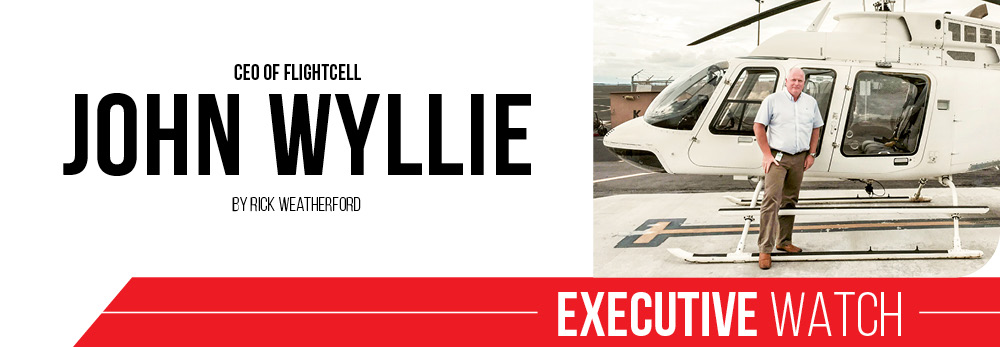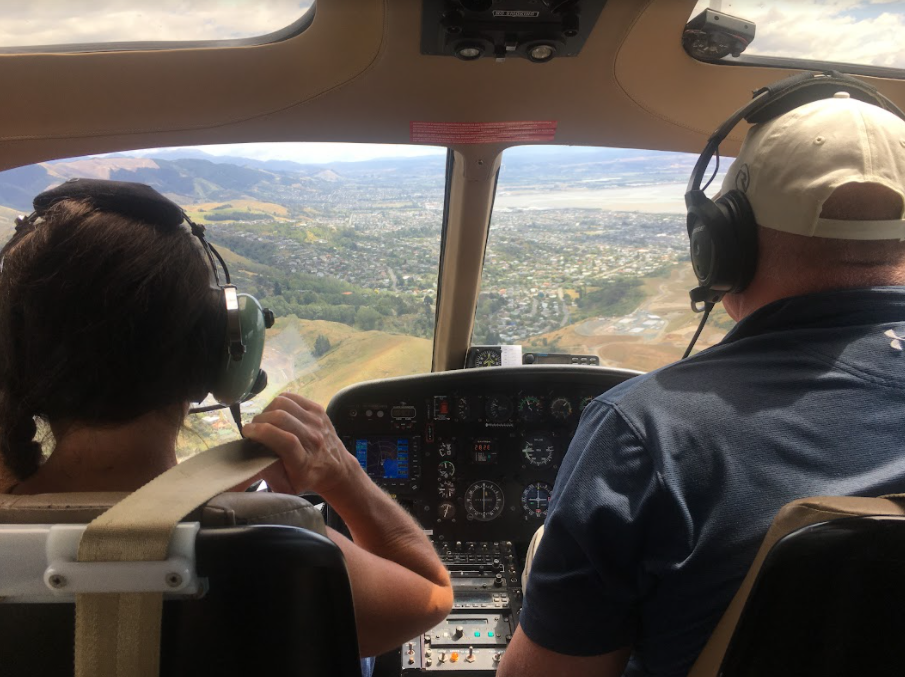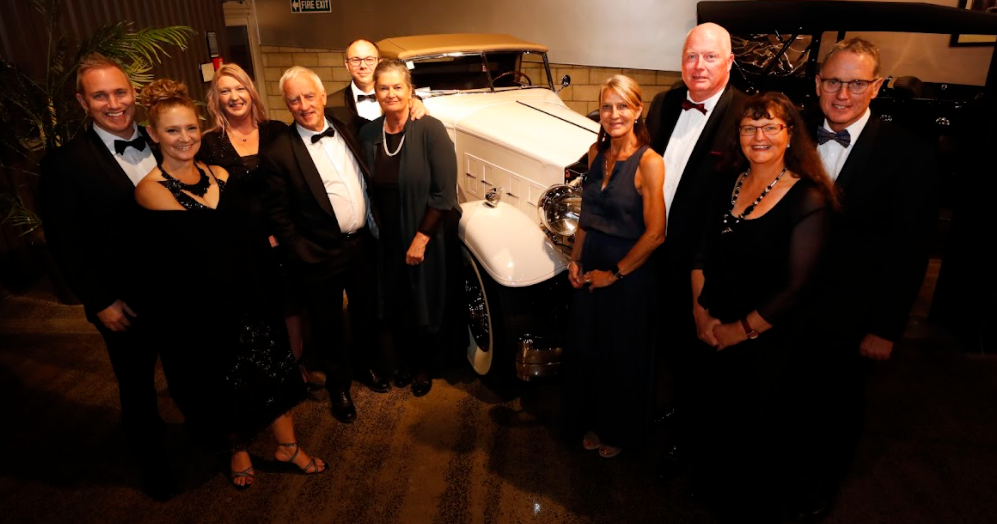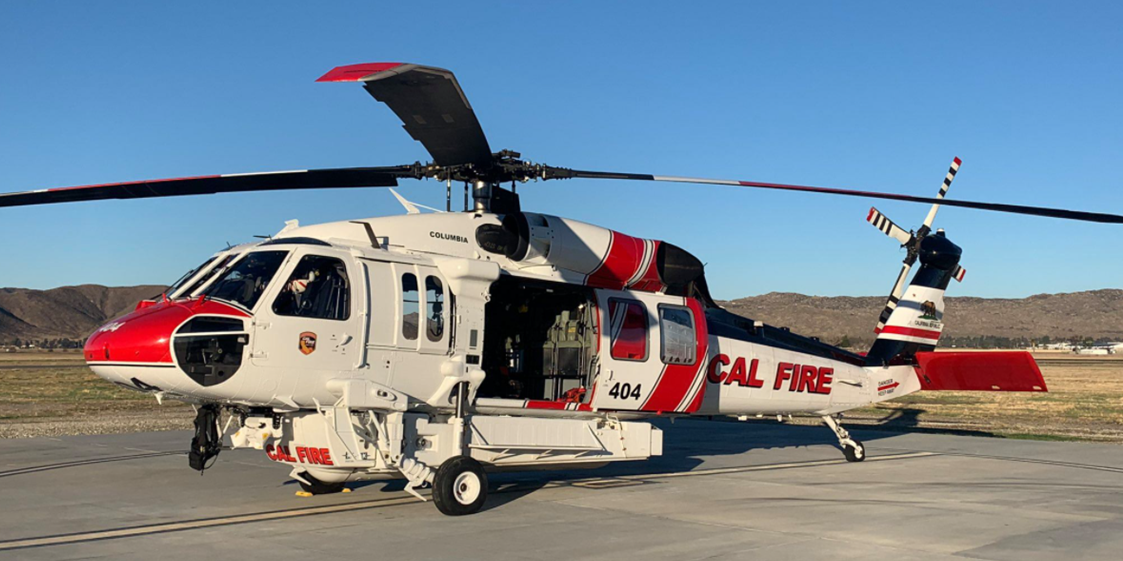|
Sep
10
2021
|
|
Posted 4 years 103 days ago ago by Admin
|
|

Flightcell’s founding CEO, John Wyllie, calls from the northern tip of his native town of Nelson, New Zealand, at the northern tip of South Island, perhaps the most majestically picturesque place on Earth. The island has been the location for epic fantasy/adventure movies like The Lord of the Rings and The Lion, the Witch, and the Wardrobe. What Flightcell does seems magical too. They link and track aircraft around the globe, allowing pilots and their flying machines to communicate with a vast array of terrestrial and satellite systems. The Kiwi company of 21 employees punches far above its size and has built a global reputation as the go-to organization for avionic communication solutions. You may have heard of some of their approx. 4,000 customers: the U.S. Air Force, Army, Navy, and Marines, California Highway Patrol, Texas Department of Public Safety, Cal Fire, Royal Flying Doctors, Colombian Air Force, and U.S. Department of State. Yes, they have street—and air—cred.

What makes Flightcell’s story especially inspiring is where the company started: the business recipe was cooked up from scratch on Wyllie’s kitchen table in 1995. “It started with no money and just an idea,” he says. It was an idea born out of Wyllie’s desire to join his helicopter piloting with his life-long fascination with communication equipment…
Granny for Sale
1n 1984, having completed an engineering apprenticeship out of his high school in Nelson, Wyllie discovered fixed-wing flying through a local club. Liking the sky life, he imagined his future as an airline pilot as he earned his initial fixed-wing pilot certificate and instrument rating. But then a friend intervened; he gave Wyllie his first flight in a helicopter and let the fixed-winger have a go at the cyclic. “I caught the bug like it was a virus. As we all know, when you start flying helicopters, you’re very likely to want to continue flying helicopters,” he says. “You choose where to land like a bird and you’re not limited to runways.” He underscores his first ‘copter crush' with this humorous analogy, “It’s like doing drugs. Once it gets in your blood, you can’t stop yourself; you’ll sell your grandmother to pay for your next flying lesson.”
Wyllie landed (legal) sales jobs to help pay for his rotorcraft lessons until he earned his commercial license in 1992. Of course, as with most life achievements, there were naysayers who tried to discourage his rotor-head ambitions. “If someone said I was wasting my time with helicopters because jobs were hard to come by, I thought that they didn’t want me to really find out just how good things were. They wanted to keep all the riches for themselves,” he chuckles. Three years later, he converted his New Zealand license to an FAA license. His first piloting job was a big one; flying an S-64 for Erickson Aircrane over Malaysian logging sites. Wyllie demurs that he was only a co-pilot. “I was a glorified office girl,” he jokes.
From Fascination to Flightcell
Growing up, Wyllie was always fascinated with communication equipment, such as two-way radios, and after that, cell-phone technology. In the cockpit, he wanted a way to connect his cellphone to his headset. After searching the world and failing to find such a connective device, Wyllie employed the service of a friend who worked in electronics to make him a box to connect his two pieces of personal property. “When friends saw my setup, they asked if I could get them one as well,” he says. “That was the genesis of Flightcell in 1995. Wyllie says, “The business took off great; We were one of the first companies to offer such a product worldwide as we began selling units through the World Wide Web in the late 1990s.”
Then Flightcell got a big boost when Uncle Sam called from the other side of the world. Air Force Special Operations Command (AFSOC) wanted to connect their Iridium handheld phones to their cockpits for overseas operations. “The Air Force wound up purchasing several of our products and that became our first main foray into the U.S. market,” says Wyllie. For several years, up through Hurricane Katrina, they sold to the U.S. military. That disastrous storm that struck the Louisiana/Mississippi Gulf Coast and nearly drowned New Orleans wiped out much of the region's terrestrial communications infrastructure. The Army used Flightcell’s products to connect satellite phones and ground civilian agencies to cockpits in the air. This need eventually birthed Flightcell’s DZM line of satcom products that are designed with military capability and quality and helped Wyllie realize that Flightcell could significantly serve military and first responder markets. The company no longer produces its consumer phone-to-headset product as Bluetooth connectivity has made it obsolete.
Customer Focus First
That shift in his company’s strategy from simply connecting cell phones to headsets came from Wyllie keeping his ears open. “I’ve always believed in listening to our customers to improve what we are doing and to make sure that we’re giving them what they want. That’s been a real key to our success,” he says. In addition to opening his ears, Wyllie keeps his eyes on the prize. “My thinking is to focus on building the quality hardware that customers want and delivering it to them. If you listen to your customers and focus on them, you’ll be successful.” He next makes an important point that applies to many, if not all, consumer-facing businesses: “Don’t focus on the money first, that will come if you provide your customers what they want. A business will succeed if you find the right market, focus on a niche in that market, and do what you do extremely well.”

Wyllie refused to be distracted by what he saw as trends that could divert Flightcell away from its main business. “We stuck to our core activity, which is hardware. Our goal is to always build the best hardware we possibly can at a reasonable price to the customer,” he says. “Most companies in our communications and tracking sector, built their hardware to promote or implement their software or service. They are a service provider first and a hardware manufacturer second. I’ve not been lured away by the pots of gold at the end of the software-service rainbow.”
Family Style Meetings
With his strong, solid, and focused opinions, Wyllie surprisingly maintains a management-by-consensus leadership style. The founder and CEO does not dictate decisions to his employees, which he unfailingly calls his “team.” He says, “I’m very much a believer in everyone being part of the team. There’s no need for anyone to be the big boss. I don’t make arbitrary decisions; all our employees, from the newest to the longest serving, are brought into the discussion. Everybody’s thoughts and opinions are sought and considered, but everybody has to understand our core business and that we put the customer first. As long as they understand our foundations, then everybody contributes equally to decisions.
Of course, such democracy would be much more difficult for a large corporation, but with less than two dozen team members, Wyllie says it suits his company as well as his personality. “That’s the way I like to do things. I don’t like to be dictatorial with a formal, hard structure; I think of us more as a family.”
Family Fun
Actually, Flightcell is part family, as Wyllie’s wife, Carol, manages Flightcell’s business accounts. The Wyllie family also includes three adult daughters and grandchildren, none of whom work for the business, but that’s fine with the patriarch. “I have a beautiful family; I’ve been very lucky in that respect” he says. Away from Flightcell, Wyllie not only enjoys spending time with his wife and their descendants, but also indulges his passion for biking on South Island’s many mountain trails (He’s currently recovering from what sounds like a painful “spiral fracture” in his leg incurred from enthusiastic pedaling—and crashing.) He also enjoys boating and fishing in New Zealand’s plentiful waters. (Nelson is the nation’s largest fishing port.) Another passion, unsurprisingly, is piloting helicopters. “I still have a commercial license and like to keep my skills up by flying for a couple of operations,” he says.

Wyllie thinks his active piloting plays a supporting role for Flightcell. “I can talk ‘helicopter speak’ because I’ve been flying for over 30 years and have relationships throughout the industry. That helps me to check on the background of prospective team members when hiring,” he says. “Also, my pilot experience helps me understand what it’s like to be in the cockpit and what pilots need from avionics. Not to disrespect anybody, but a lot of avionics people don’t have that experience; it makes a difference when you actually fly with the equipment. That experience helps us design Flightcell products.”
Business Bogeyman
Designing and bringing cutting-edge communication avionics to market is a continuing challenge for Flightcell. “The speed that technology is changing is one of our biggest challenges,” says Wyllie. “Communication technology has evolved massively over the last 10 years in general outside of aviation.” Customers expect the sleek technology they use in their lives away from aviation to find its way into their cockpit. “It’s a real challenge to bring that technology over to aviation at the same speed it’s happening outside of aviation,” says Wyllie. He believes that challenge is not necessarily due to engineering and manufacturing issues, but because of a bogeyman that we often hear refrained from by business owners and executives: government regulations. “The regulatory system (e.g., FAA, EASA) has not been able to keep up with the speed of technological change,” Wyllie says. “They struggle immensely with updating their regulations to keep up with advancing technology. Regulations are holding technological advances and development back from the industry with overbearing rules. There are considerable problems getting certification from the FAA, for example, because the people there just don’t understand the technology; it’s moving too fast for them.”

Wyllie concedes that current regulations were initially implemented for good reason, but he says they are becoming outdated at an ever-increasing rate. Still, he sees relief on the horizon. “I think there is starting to be a recognition within the FAA that the rules that applied to large, wide-body jet aircraft don’t need to be the same for small, rotary-wing aircraft. There has been a one-size-fits-all mentality for a long time, but we are starting to see some recognition that this type of thinking is delaying the roll-out of affordable technologies at the lower end. It’s all very well to design a product for a 747 or A320 budget, but you cannot roll that same budget into an AStar or whatever. People in our industry can design products with just as much capability that can affordably go into an AStar, but the regulatory rules are so draconian because they’re based around aircraft holding 300 people and not for aircraft with four to eight people. The FAA is starting to realize the rules should adapt to different types of aircraft, but that realization is happening at such a slow rate, whereas technology is improving at such a high speed, that there’s a big disparity between the two.”
Fantasy Adventure
While burdening regulations remain a constant challenge for Wyllie and the rotorcraft industry, it is an industry he still likes. “Aviation is a relatively small, well connected industry, and the helicopter sector is even smaller and more tightly connected. It’s a fun industry to work in because of those tight relationships. We’re still connected and close to customers even if we’re on the other side of the world.” Wyllie likes closeness, but he’s perfectly happy to remain based at his native spot on the far side of the globe. He contently says, “Being based in an island town by a mountain lake in the Southern Hemisphere isn’t a problem at all.”
Founding a successful, global-class company with a family feel in the fun rotorcraft industry and getting to live in your idyllic hometown surrounded by natural splendor sounds like a fantasy adventure better than any movie!